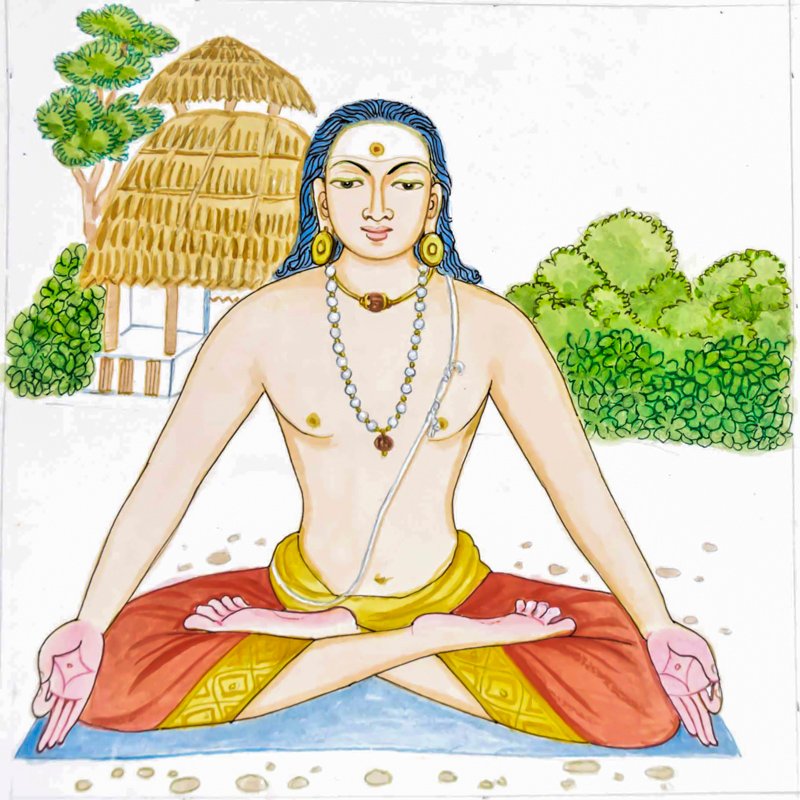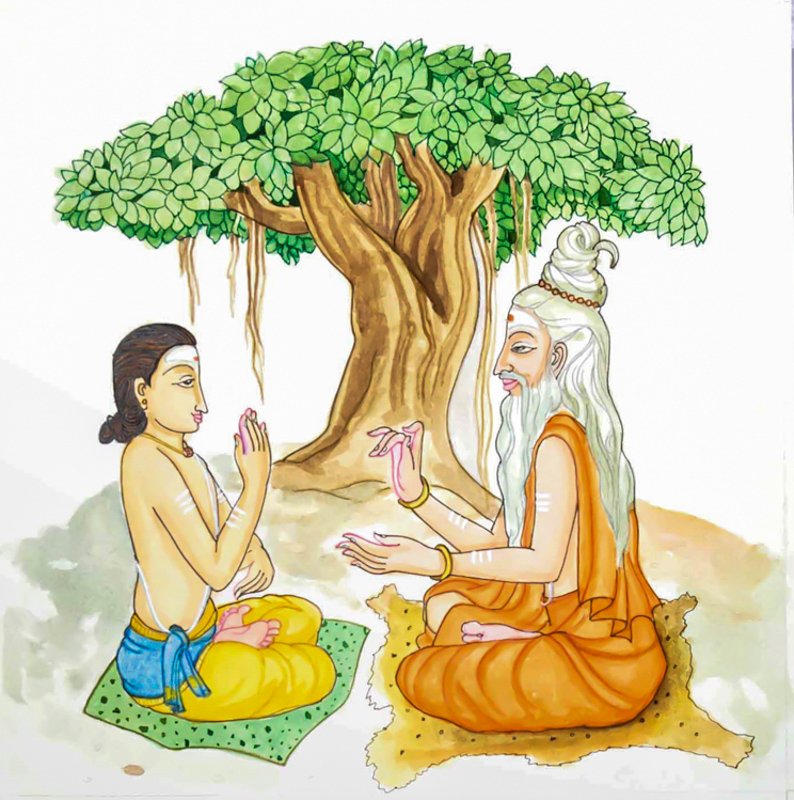Pillar Nine
Artwork by A. Manivelu
Top

NORTH FACE:
Plumeria FlowerThe plumeria flower, sometimes called frangipani, is equally popular in India and Hawaii. It is used for making garlands and offerings. In Hawaii women wear the fragrant flowers in their hair. They do not flower freely at the monastery, as they prefer less rainfall.

EAST FACE:
Indian BedelliumOutstanding among the earth’s aromatic endowments is guggul, a soft brown gum resin that in fragrance is similar to myrrh. It is tapped from the bark of the Commiphora wightii tree and used both as a perfume or incense and as a medicine. Guggul has a warm, slightly sweet, balsamic, herbaceous and earthy aroma with hints of vanilla and is often burnt after sundown to lend a tranquil note to the evening. It grows in the central regions of India.

SOUTH FACE:
ConchThis a conch, used in temple and home pujas to sound and summon the Divinities, usually at the height of the puja.

WEST FACE:
Durva GrassThis is durva grass (Cynodon dactylon), also called aruhu and harali, sacred to Ganesha and traditionally offered to Him in puja.
1 of 4
Middle

NORTH FACE:
SamhitaThis man chanting Sanskrit slokas and making offerings into a homa fire represents the part of the Vedas called samhitas. Samhita literally means “put together, joined, union”, a “collection,” and “a methodical, rule-based combination of text or verses.” Samhita also refers to the most ancient sections of text in the Vedas, consisting of mantras, hymns, prayers, litanies and benedictions. It is also a common alternate term for the Vaishnava Agamas.

EAST FACE:
BrahmanasA yogi is meditating before a small temple. He represents the Brahmanas, which are one of four primary sections of each Veda. This section is concerned mainly with details of yajña, or sacrificial fire worship, and specific duties and rules of conduct for priests, but also rich in philosophical lore.

SOUTH FACE:
ArayanakasHere a Sivacharya is chanting the arayanakas that are scribed on palm leaves. These “forest treatises” make up the third section of each of the four Vedas. The texts contain esoteric, mystical knowledge, largely on the inner meanings and functions of the Vedic yajna, or fire ceremonies.

WEST FACE:
UpanishadsGuru and disciple are seated under a banyan tree discussing the Upanishads, which literally means “sitting near devotedly.” The Upanishads are the fourth and final portion of the Vedas, expounding the secret, philosophical meaning of the Vedic hymns. The Upanishads are a collection of profound texts which are the source of Vedanta and have dominated Indian thought for thousands of years. They are philosophical chronicles of rishis expounding the nature of God, soul and cosmos, exquisite renderings of the deepest Hindu thought.
1 of 4
Bottom

NORTH FACE:
Going WithinGoing within. This is Shum script for makaif, kaif, iikaif and imkaif. It is a meditation in Gurudeva’s language of meditation and one of the 12 meditations he asked us to carve on the pillars. This is the March meditation. From top to bottom, makaif is the philosophy of the inner path of enlightenment found within the vocabulary and structure of the Shum language. Kaif is pure awareness aware only of itself. Iikaif is the state of consciousness when only the nada sound is heard, the high tone within the head, which sounds like “eee.” Imkaif is pure awareness dissolving into its source. It is not another thing or experience; it is the absence of all limiting experiences.

EAST FACE:
RealizationRealization. This is Shum script for aum, ausisium, niimf, imkaif. It is a meditation in Gurudeva’s language of meditation and one of the 12 meditations he asked us to carve on the pillars. This is the April meditation. From top to bottom, Aum is the inner sound of the universe heard deep within the head; it is the sum of all sounds. Ausisium is the kundalini which ascends through the seven chakras as the soul awakens. Niimf is the swirl that represents awareness moving from one area of the mind to another. Imkaif is the ultimate realization of the timeless, spaceless, formless self. It is what remains when awareness, aware only of itself, dissolves into its source.
1 of 2
